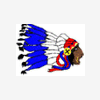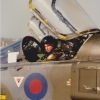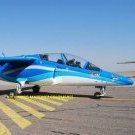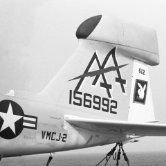-
Posts
108 -
Joined
-
Last visited
About colossusfr
- Birthday 08/11/1968
Contact Methods
-
Website URL
http://maquette72.free.fr/index.php
-
ICQ
0
Profile Information
-
Gender
Male
-
Location
Bordeaux, France
Recent Profile Visitors
2,266 profile views
colossusfr's Achievements

New Member (2/9)
493
Reputation
-

Bomarc A & B - SovaM & Belcher Bits - WIP
colossusfr replied to colossusfr's topic in Work in Progress - Aircraft
And I start with the second Bomarc, that of Belcher Bits. Very standard resin. Resin stripping. Nothing to say except that it's going well. Assembly of the missile. Overall it goes well, the assemblies are easy and well designed. Not a lot of putty needed. The wing connections, stabilizers and fin still need to be smoothed. There, I tried a new technique, the one described by JM Bocquart: smoothing the classic Tamiya Gray putty with a cotton swab with cellulo thinner. It's just like acrylic putty with water, except with the smell of course. But overall, it's going very well. I wanted to try it in anticipation of the Fondor (but this will be another dimension!!). And we move on to the launch pad parts. All the pieces are ready. After a week (three sessions) of assemblies. Assembly of Belcher Bits completed. A little more complicated assembly than the SovaM Both sets: Concerning the SovaM, no modification: For the Belcher Bits, it was a little long. A lot of parts had to be adjusted. Quite a bit of preparation of the parts, but this is classic for resin. But several points had to be worked quite hard: the base was raised because the arm mechanism touched the ground. So I raised it to have some margin. I also created a support at the front of the base so that the missile can rest on it (for information, it will be lowered to 45°, as seen in quite a few configs). The entire tilting mechanism should be functional, he therefore reworked all the axes. We'll see in the final edit if everything goes well. And regarding the missile, I redid the pitots. There you go, assembly finished. We will be able to move on to painting. Alain. -

Bomarc A & B - SovaM & Belcher Bits - WIP
colossusfr replied to colossusfr's topic in Work in Progress - Aircraft
First removals: Overall, the assembly is going well. Of course, it's a short run. The parts need to be prepared, there is a little burr, especially on the small parts. But the moldingis very correct. A lot of sanding and refining to get it right. And as a result, it was necessary to redo some structural lines following sanding. First build. Easy. Then assembly of the two boosters. The launching pad. No difficulty. You have to prepare the parts well, a lot of burrs. It's short-running. The assembly goes well overall. The sub-assemblies: Missile reminder Then the launch pad itself is complete (I probably need to rework the cables on the side which are confusing). And for pleasure, the whole thing. But this will be painted separately. -
Hi everybody. Slightly different setup this time. It's aeronautics but without piloting, while not being a drone..... I want to talk about the famous ground-to-air missile program which was to replace interceptors in the 1950s and 1960s. The recent Sova-M model gives me the opportunity to make a copy of this program in the person of the Boeing CIM-10 Bomarc. And as I had an old copy of the Belcher Bits resin kit of this same machine, I am going to make two copies. The Canadian brand also offers several different decorations, this will give more originality than the poor gray livery of Sova-M. The Sova-M model: And the Belcher Bits resin model:
-

1/72 - Boeing CIM-10 Bomarc by SOVA-M - released
colossusfr replied to Homebee's topic in The Rumourmonger
I got it. A nice kit. I have also in my stach the same kit from Belcher Bits. -
Hi all, Only one and sole achievement for me this year. BAe Mantis - Combat Kits 1/72 I will try to do better in 2024. Alain.
- 6 replies
-
- 15
-

-
Hello friends, I chose to rehabilitate an old model. It dates from 1992 (end of my student years...). Painted with a brush, of course, but it seems to me that it still holds the comparison. It still needed a refresh on the decals that had to be replaced. Thank you Thierry for sharing a new Carpena decalsheet. A small veil of varnish for this time to freeze and perpetuate the decals. A bit of additional weathering and it's over. On to the pictures. I hope you will like it. Alain.
-

BAe Mantis - Combat Kits 1/72
colossusfr replied to colossusfr's topic in Ready for Inspection - Aircraft
Thanks everybody for your comments. Alain. -
Hi everybody UAVs are back!! After abandoning this type of models for three or four years, they're making a strong comeback with this unusual machine. Europe has been searching for its place in the world of drones for quite a few years now. In the early 2010s, numerous prototypes emerged in Europe, including the BAe Mantis, a machine that would later give rise to the Telemos in partnership with Dassault. It made its first appearance at the Farnborough Airshow in 2008 with a mockup. The version shown here is the one that flew flight tests in 2010 in the Australian desert. The model used is one that I searched for a long time. It is a pure resin model from the English brand Combat Kits. The molding is pretty good, but the engravings need some work, and all the assemblies need to be reworked to obtain a decent result. Nonetheless, the model is still very good and accurately represents the real thing. A lot of work is needed to engrave and refine the details of the nose. The painting was quite complicated. Most photos show it backlit and almost black. The few indoor photos show it more brownish. I decided to use this shade for my representation, with a hint of copper and a lot of weathering. The kit decals are of good quality. In the end, it's a machine that I really like, and it enhances my collection of drones. Photos : I hope you will like it. The complete WIP can be found there See you soon with a complete new project. Very different, still resin, and still a flying machine ! Alain.
-
Hi everybody, Last straight line and the end of this WIP. Decal session: two days all the same. We're going to say three sessions of an hour and a half each. The sheet offered by Combat Kits is quite complete with a lot of stencils. I must admit that I don't necessarily find them all in the photos. Or else, they had access to documentation that cannot be found on the Internet. In any case, the final aspect is nice. A little feedback on the use of these Combat Kits decals : great finesse, take a little time to come off in the water, lands really well. But once applied, the decal can only be repositioned for a few tens of seconds. We have time, a minute or two. But impossible to come back 10 minutes later. Once glued, impossible to reposition it. No big deal. Note that they are very shiny. Therefore, a varnish over to standardize the whole will be mandatory. Reaction to Micro Sol and Micro Set without problem. And as they are very thin, the Micro Set (the red one) works very well, the few decals on the structure lines hug these structure lines very well. And the last weekend allowed me for a whole bunch of finishing. Application of a gloss varnish over the entire aircraft to freeze the decals (Tamiya Clear). Classic... And we start painting the base of the pitôt point in brown. And I also paint the antennas on the photodec board. Those intended for the back and the wings in gray (PA Gray pale), and those intended for the pitôt tip in aluminium. Passage of a juice. It was a mix between the Dark Gray Tamiya then a brown Tamiya. I probably should have made a brown everywhere. But that's okay, the difference is minimal. Some alterations: the discs of the front of the fuselage in gray, and the two air intakes of the front in aluminium. Another tricky job: I had to sand the glass of the headlight before I had painted. Sanding to review the transparent side of the headlight and polishing. A satin varnish over the whole. VMS satin varnish, diluted with X20A. Classic. Blocks the aero a little but not too much. In the end, I don't know if I should have because it broke the copper aspect of the paint a bit too much. I glued the antennas on the wings and on the top of the fuselage. After drilling with a mini-drill (which I farted). I painted the two probes on the front of the fuselage in Green Stuff chrome and with a black tip for one and a transparent green tip for the other. A few panels are finished with patina using Tamiya pallets. In particular a coppery orange on the wing panels and some of the fuselage to give a little more life and find the coppery/cooked side. Am quite happy with the final look. The photos below do not show it well. The panes of the optronic ball with Green Stuff holographic paint. Then work on the front pole where the photodec antennas had to be placed. Delicate work. I had to drill the pitot rod very finely to allow the antennas to be glued to the pitot rod. A little tedious, I farted a bit, I almost broke an antenna. But in the end, it does. We iron an aluminum on the whole. And we put it on the nose. And in the end, it gives this. Very fast photos which forces a little the contrasts. Better soon. See you soon in a next thread which will be dedicated to the final photos. In the meantime, he should be present next weekend at Lyon-Bron (France) modelshow. Alain.
-
I tried different colors. The Xtracolor X614 should be a good choice. After analyzing the photos, I'm not that far off with my chosen color. And I like the finish. So I let it like that. Next step: put it on its wheels. Next : decals. Alain.
-
Thanks Rob. You are totally right. I think as you. It may be a bare carbon-epoxy turned brownish-bronzish. I tried seven different "brown" before choosing what you can see above. It's really a difficult color to reproduce. The best could be decals. I found this one : It could be good. I think it's the right color. But too much work for me. I let you to do a better Mantis than mine !! 😁 Next step for me : undercarriage et decals !! I give up about finding the right color ! Alain.
-
Transition to painting. My benchmark is about the only photo that is not backlit by the camera, namely this one: And so after a lot of procrastination, I went on a Gunze 72 "Dark Earth". And I veiled it slightly with a copper metallic color, the Vallejo Metal Color Copper 77.710. Good in the end, it's not bad but it is a bit too "golden". So I took it all back and applied a new veil of brown, a bit darker, Gunze H37 Wood Brown. Painting of the cockpit bubble. First, we mask this bubble from the cockpit. Then, use of a Gunze H81 Khaki. That's what I wanted. A slightly more grey/green shade that doesn't contrast too much with the brown. The result is not so bad. And then, I take the opportunity to paint the tip of the tail which also seems to be the same shade. Given the few photos, we are not sure of anything. A photo of the set Result of work on the undercarriage legs. Front leg: Alu (PA) + Juice (MiG Dark Wash) + chrome cylinder (Green Stuff) + recovery with a point pen Main gear: white in GW, + Juice (MiG Dark Wash), very light + cylinder in chrome (Green Stuff) + recovery with a pen of the points Wheels: Hubs in white (Tamiya) + Tires in black (GW) + Juice (MiG Dark Wash). I have to take the tires again because the first layer has cracked. Radar ball: gray Optoptric ball: Tamiya white + shiny black windows (at the end, a coat of Green Stuff holographic paint). Next to come. Alain.
-
A lot of work since the last update. Big job of puttying the various joints. Using Perfect Putty Acrylic Putty. On the nacelles. And on the different assemblies. I pass a first coat of paint to check the various seals. From a distance, it's not bad at all. But up close, there are several imperfections. First on the back, the surface condition is far from being at the top. Weird, I hadn't noticed that before. And especially the trailing edge of the karman fittings is really ugly. This wing/fuselage connection is difficult. Some glue shrinkage at the base of the daggerboard and on the keel. For the nacelles, it's fine. Using Tamiya Gray putty to rework it all. After two nights of drying, delicate sanding work. The back first. The wing/fuselage joints on the trailing edge are rather well repaired. And the recesses of the daggerboard and the keel are sanded. In the end, it is almost ready for a first coat of paint. I'll tell you about the right shade next time.
-
Some news. And thanks for those wha are following this build. A lot of preparation in the last few days. I concentrated on the engine nacelles. I started with the engine air intakes. There are four, two per nacelle. I had fun trying to drill them. I hope something can be seen at the end ! To position them correctly, I drilled them slightly to put a small tenon. Then I also prepared the 4 exhausts. That I also dug with the ball cutter. Then the same, adding a small tenon in each. And finally, also drilling the axis of the propeller (supplied in white metal). With a family photo of all the engine nacelle parts: four air intakes, four exhausts, two propellers, two nacelles. Small work on the trains with drilling holes to fix the trains in the train bays (which are minimalist). No need to tweak them any further. Finally, it assembles rather well once the drilled trains. A little photo on his paws, just for fun. We also had to redo a tenon for the left wing. A little work with drilling then adding plastic card. And we start putting it all together. First the wings. Then the centreboard and its stabilizers. Then second crosswise with the plane that fixes the engine nacelles. The engine nacelles are not glued but it's for fun! Next soon. Alain.
-
Hi, Some (slow) progress in recent days. The real photos show that the fuselage panels, at least on the front, are heavily riveted. Like the cockpit bubble, by the way. I had fun trying that. It is however a technique that I have very rarely used. So I released the magic roulette "Rosie the riveter". After a few tries, the 0.7mm one works quite well. And the idea is to redo the two protrusions in front which are orthoptic sensors. For this, I bought a Master set for a Spitfire (we are far from it!!) which offers a form of these two probes. And after a lot of work, a broken forest, and a bit of sweat and fear..., we get this: Well, there we still see a lot of faults but in real life, it's going well. fterwards, I finalize a few lines of rivets on the sides. On the photos, we only see it on the front of the fuselage, and not on the rear or on the wings. And in the end it will look like this: the black surface of the noise is chromed. And we hollow out with a ball cutter the end of the transparent cluster that we use to redo the fire and we also paint it in chrome (Molotov marker). Very small step: we stick the end of the transparent cluster on the nose. A step that I don't really like: inevitably you have to sand hard to shape the bubble. Not easy and I don't have the best experience in this exercise. The fact that I don't like sanding obviously explains that!! I masked the pitots on top to avoid scratching them too much. The bubble is not very transparent but by sanding finer and finer, and eventually polishing, it will do. You have to have confidence. But, it wee weed me off, the finesse wasn't there. I had grayed the whole thing and there were a lot of imperfections. So, I puttyed all the small areas of the nose with Tamiya Gray and especially the fuselage/bubble connection, and also a little around the two pitots. We let it dry. And we re-sand over it, finely. In the end, here is the result. Not so bad. It's far from perfect but let's not forget that we are in macro which does not forgive anything. In fact, it's starting to look like a decent thing. The bubble has a shape that suits me, the connection with the fuselage is correct. And the bubble is almost transparent (not very obvious on the photos, I agree). I also puttied and sanded the tail. Basically, it had a small concern for symmetry, but above all there were some bubbles in the resin (yet of very good quality elsewhere). Ditto on the underside of the fuselage, there was an imperfection in the join of the fuselages. Next soon. Alain








